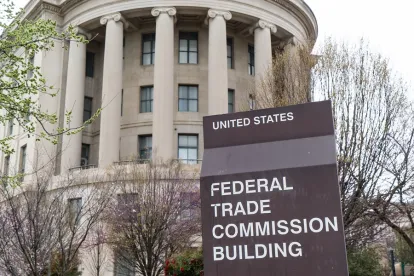As the saying goes, “the only thing for certain, is nothing is certain.” With a rash of changes since Chairperson Lina Kahn took command, the FTC is certainly proving that maxim true. Seeking to transform the historically sleepy agency into a more progressive regulator of the U.S. economy, Kahn’s FTC’s latest salvo targets the merger review process.
In 1976, Congress established a merger control regime that has become the envy of the world. Parties to transactions above certain thresholds must provide advance notice to the Federal Trade Commission and the Department of Justice, and cannot consummate the deal until expiration of the statutory waiting period. While the delay imposes a burden on the merging parties, the parties receive something in return too. If the deal is approved, they can proceed to closing comforted in the belief that the federal government will not later come knocking. Of course, even then nothing is absolutely certain. The FTC always reserves the right to challenge deals if anticompetitive effects later manifest, but the risk of a post-clearance challenge was historically negligible. Last month, however, new FTC leadership upended this carefully calibrated balance.
Rather than reserve post-closing challenges for the rare deal that slipped by the FTC’s watchful glare, the agency has now adopted a new practice of issuing warning letters regarding deals it has allowed to close. The letters threaten the parties with the specter of further action if they actually do close. By asking the parties not to close upon the expiry of the waiting period, the FTC is effectively seeking a de facto extension of deadlines that Congress did not see fit to give it. It is a strange practice that sparked the Republican Commissioners to strongly dissent. The added uncertainty created by the FTC’s new policy, said Commissioner Christine Wilson, will “raise the costs of doing mergers and threaten[s] to chill harmful and beneficial deals alike.”
But what do these letters mean? Is the threat credible? Should the parties stop their transaction in its tracks? Does a buyer have the right to walk away from the deal if it believes the FTC’s threat is real? Or are its hands tied by contractual commitments to close? These questions must now be anticipated and addressed in the parties’ merger documents. But how?
It is still too early to determine the impact of the new warning letters. So far, most merging parties appear to be ignoring them. But sooner or later, the FTC will bring a post-warning-letter enforcement action to show it has the power and resolve to do so. When it does, denial may no longer be an effective coping strategy, and parties may need to take more notice. Until then, parties should at least consider that their deal may be the one the FTC makes its warning-letter poster child, and plan accordingly.
A. The Policy
In announcing the new policy, the FTC blamed a “tidal wave of merger filings that is straining the agency’s capacity to rigorously investigate deals ahead of statutory deadlines.” Its solution was not to comply with the statutory deadlines, but instead to issue form letters to parties after it decided to let the deadlines expire without action. As the FTC’s Director of the Bureau of Competition explained:
“For deals that we cannot fully investigate within the [statutory] timelines…, we have begun to send standard form letters alerting companies that the FTC’s investigation remains open and reminding companies that the agency may subsequently determine that the deal was unlawful. Companies that choose to proceed with transactions that have not been fully investigated are doing so at their own risk.”
The policy actually impacts relatively few deals, though it may be difficult for parties negotiating potential deals to guess whether theirs will fall within its ambit. For small deals with no competitive overlap, there is nothing to worry about. And the FTC does not appear to be sending warnings in these cases. For large deals with obvious problems, the FTC is continuing its standard practice of issuing second requests, precluding the immediate expiration of the statutory waiting period. Rather, the warning letters appear to target Goldilocks deals in the middle: those where the FTC is concerned about a transaction but not sufficiently so to take steps to address the issue.
Until recently, the number of cases that fit this criteria was vanishingly small. And for good reason. If the transaction is bad enough to raise concerns, why wouldn’t the FTC issue a second request? And if the FTC doesn’t have the votes on the Commission to challenge the transaction now – when the democratic commissioners have a 3-2 majority – will they really muster greater resolve in the future? In theory, though, the policy has some practical appeal. There could be an anticompetitive deal the FTC wants to put on the back burner until deal flow dies down. Triage is a tried-and-true strategy on the battlefield. Why not for deal investigations leading to courtroom battles? The new warning policy simply facilities this triage, and signals to the market that post-waiting-period challenges will no longer be a rare occurrence.
But if the FTC means to deter the immediate closing of these deals – what else could it mean when the FTC says “Please be advised that if the parties consummate this transaction before the Commission has completed its investigation, they would do so at their own risk” – it will have to make good on its promise to take action. It will have to move at least one deal from the back burner if the policy is to have any effect at all.
B. The Implications of the Policy
So how should parties to Goldilocks deals – those most at risk of receiving a warning letter and being tagged with a future enforcement action – handle this added uncertainty and risk? Antitrust risk management is often a complex endeavor requiring parties to anticipate a wide range of potential agency outcomes. But in the past, that risk came with an expiration date. Once the statutory waiting period expires without action, the chances that the FTC would later challenge the deal was negligible. Of the 60,000-some HSR filings over the last 40 years, the FTC only challenged one reportable transaction after allowing it to close at the end of the waiting period. This implied a post-closing risk of less than 0.0002%. Given that, buyers could comfortably assume that risk without much ado, and merger documents typically require the buyer to close after the waiting period expires.
But now, let’s assume the warning letter policy increases the risk of post-closure action from 0.0002% to 10% or even 20%. What should the parties do? Clearly, the FTC wants the merging parties to believe that the risk of a challenge has significantly increased, otherwise it wouldn’t send the letter. Should you take the bait, or should you call the FTC’s bluff? If it turns out the FTC was not bluffing, who should bear the consequences? Should the buyer be obligated to close, even after the FTC warned it not to do so? Or should the seller bear some responsibility, just as sellers often do when the FTC raises concerns during the applicable waiting periods?
So far, merging parties and the antitrust bar generally have taken the FTC’s new warning letters with a grain of salt. Mere saber-rattling, they say, claiming that the warning letters are “largely superficial” because – ultimately – the FTC needs to go to court to challenge a deal. See FTC Merger Warning Letters Seen as Largely Superficial, Law360 (Aug. 18, 2021). Viewed logically, the risk of litigation over a deal the FTC does not even want to fully investigate, let alone challenge, during the statutory period (which can extend a year or longer) must be small.
But if the FTC is serious about its warning letters, it will need to bring a post-closing case just to prove it can and will. The FTC also has a fairly good track record in the merger cases it does bring, especially since any challenge will be heard in the first instance by an Administrative Law Judge employed by the FTC and whose decisions will be reviewed de novo by the same Commissioners who voted to bring the case. Even if the FTC is not successful, the costs of litigating a merger is not small and can easily eat away all the expected synergies of a mid-sized deal. So the fact that the FTC ultimately needs to litigate to unwind a closed transaction may not offer the buyer much solace.
Given this, for deals on the cusp, it may be prudent for parties to make the absence of a warning letter a condition precedent to closing. Alternatively, the parties could agree upfront that, if they receive a warning letter, they will allow the FTC more time to finish its investigation before closing, effectively giving the FTC what it wants. There are downsides to this, of course, particularly on the seller, so it should not be expected that such provisions will come cheap or would be easily agreed to. But regardless of whether the FTC is flexing its muscles for show or just warming up for the main event, parties should consider the implications of the FTC’s new policy before they ink their deal – otherwise, it may be too late for them to do anything other than proceed at their “own risk.”





 />i
/>i

